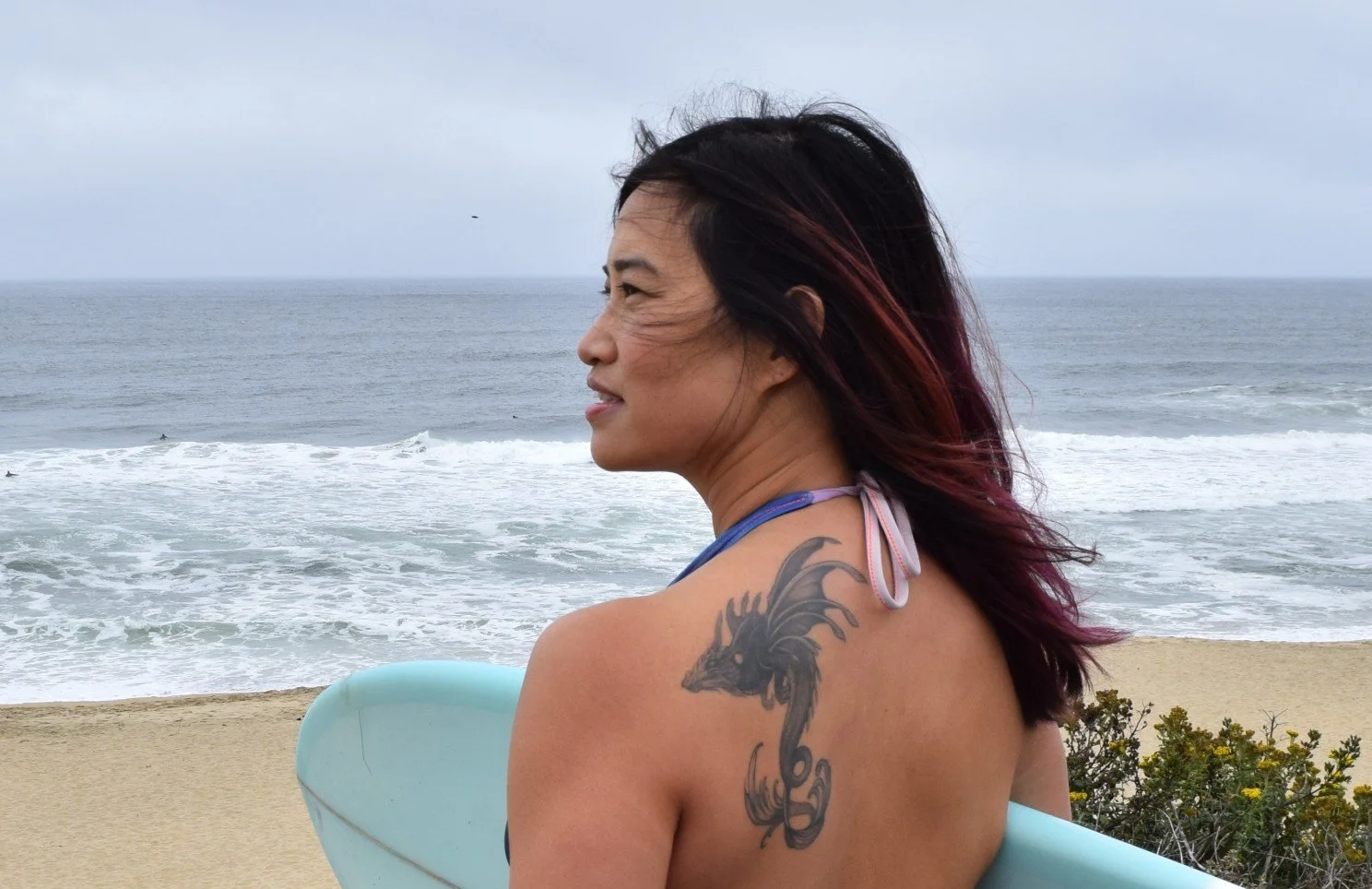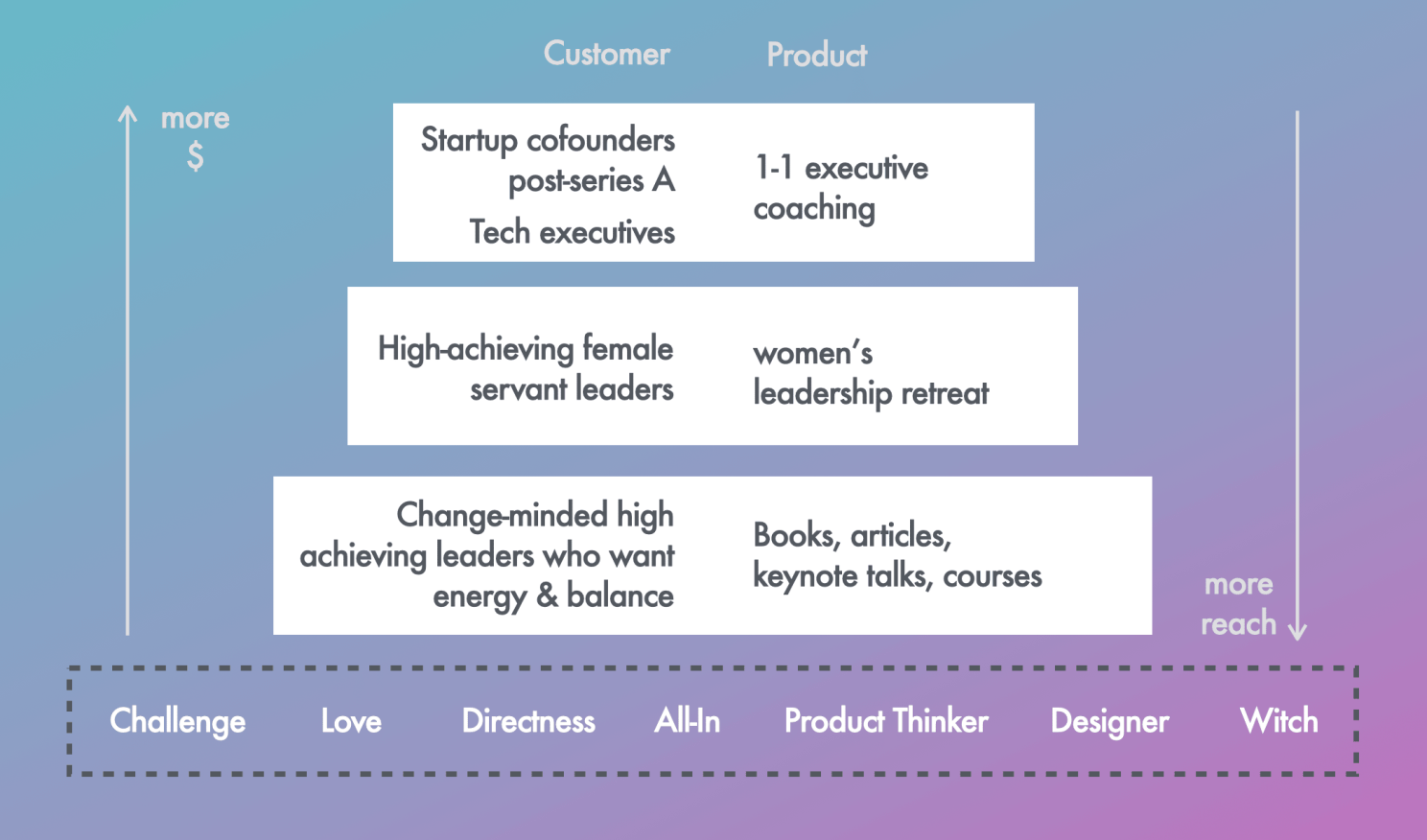Five Years of Being in Business
2024 was a milestone year for me. In Chinese tradition, it was my fourth 12-year zodiac cycle, the fourth Year of the Dragon since I was born in 1976. I looked to the past and claimed the intention of Supreme Fortune for 2024 and by the end of the year learned that I had a new perspective of financial freedom. Nothing had changed with my numbers or data, I’d experienced a shift in mental prioritization and mindset. Cheesy? Yes. But hugely effective in easing daily stress, worry, and overwhelm that had continually been pulling me down.
An equally huge milestone is that in late 2024, I celebrated five years of working for myself. I have a multifaceted business — coaching startup founders and corporate leaders looking for exits, running women’s leadership retreats, writing books and articles, keynote speaking & facilitation, creating courses, a tiny bit of consulting and advising, and shamanic counseling.
The bulk of my work is with coaching and writing. My background is in tech and design and these are five universal lessons from my five years of business.
Lesson 1: Learn and Get the Reps In
I’ve been a life-long learner, typically curious, impatient and over-eager. That makes me a prime candidate to hire personal coaches. Over the past five years, I’ve had business coaches, book coaches, a family coach, speaking coach, relationship coach, therapists, shamanic teachers, and many peers in the community who support me. I believe that hiring a coach, or being part of a group with similar goals, has tremendously accelerated my learning. I continually seek help and expertise to help me grow my skillset and my business.
I also kept practicing. One of my first coaches, Rich Litvin, issued a challenge to have 100 coaching conversations and convert some of these into clients. In the spirit of the challenge, I signed up with a career coaching platform where I coached hundreds of people in fifteen minute increments. It wasn’t the most enjoyable, but the hundreds of hours gave me a lot of reps.
When I wanted to become a better public speaker, I enrolled in a 10-month program with Heroic Public Speaking to learn how to write for speaking as well as how to perform my ideas to best connect with the audience.
When I started on this business journey, I published a blog post once a week. This evolved into material for a book, and I continue to write for Harvard Business Review and Fast Company.
In addition to learning, I had to un-learn many of the skills from my 22-year first career as a product designer. Instead of solving problems for my clients, I had to hold space and encourage them to solve their own problems.
Lesson 2: Become Comfortable with White Space
I was raised by an Asian tiger mom who taught me to hustle, work hard, and keep chasing external achievements —be valedictorian, attend Stanford, work at name brand companies, get promoted, and climb that career ladder. It was a straightforward, mostly linear path especially as I chose to go into tech.
Being a designer taught me about white space. That the space between the words and images. The uncertainty of creativity and how you needed to maintain energy while making brand new zero-to-one products for the world.
In my second year of business, I wrote about my path leaving the corporate world, publishing my first book Make Space to Lead: Break Patterns to Find Flow and Focus on What Matters. But I was still in go-go-go mode, completing the impossible task of writing and publishing a book in a ridiculous 9 months. There certainly wasn’t a lot of white space in my process. I was aware of the hypocrisy, but I couldn’t slow down.
Sitting with those concepts, now having five years proactively undoing decades of conditioning, I can say that my life this year finally feels spacious. I’m doing much more work in less time. I’m moving away from black-and-white thinking and becoming more comfortable with nuance and uncertainty.
Building a business (and a life) full of white space means that I can better manage my energy, prioritize my time, and have the spirit to raise teen girls on their own mental illness journeys.
Lesson 3: Set Both Metric-based and Learning Goals for the Win
I tend to have shiny object syndrome and I get energy from working on multiple things in parallel. Following the principle of many little bets works well with my tendencies.
Each initiative is an experiment. There is a success criterion that might be metric-based (e.g. get my second book on Asian American women published by a major publisher, or hit a particular monthly revenue target), however, it’s equally important to have a learning goal. I’ve had many failures, but still hit my learning goals. For example:
I did not get a publishing deal for my second book. Despite having multiple agents eager to represent me and finishing a book proposal with the help of several editors, the climate had changed and DEI topics were less attractive. However, I learned about the publishing industry business model , how to work with an agent to write a book proposal, and greatly improved my writing.
I taught a 12 week cohort on a pro bono basis, falsely thinking that it would lead to more paid work. But I met my learning goal of creating a curriculum arc and sharpening my group coaching & facilitation skills
If you have both a metrics-based and a learning goal, you win either way. It makes you a little more unattached to the outcome, and more willing to run experiments that succeed or fail.
Lesson 4: Experiment with Customer Acquisition and Target Audience
To build a business, you must know your customers, their unfulfilled problems, and your unique solution to that problem. It was challenging for me to find this immediately and I continued to iterate until I found the right combo of work I love and people willing to pay me for it.
I started out coaching anyone who would spend time with me. Then over the months and years, I iterated through different groups of people, carefully noting which niche — based on demographic or problem solved — responded best to me, and who I loved working with. I experimented with these focuses:
Resume, portfolio and interview coaching
Negotiation coaching
Asian American women
So-called “difficult people”
Immigrants and/or people of color
Corporate tech folks looking to cultivate a side hustle
After years of iteration, I’ve landed on my current model. I serve three groups of customers (remember that shiny object syndrome) with three different product types. And I serve them by delivering the products in a unique brand-of-Tutti way. This is where I am right now and I’m looking to expand to do more shamanic counseling work in 2025.
Lesson 5: Know your intrinsic (and extrinsic) motivations
One of the hardest things about working for yourself is that you must self-generate motivation. Without a team or community, it can feel awfully lonely.
Extrinsic motivations like hitting a financial goal or signing a new client can get you only so far. What helps is being clear on your intrinsic motivations. My formula is to:
Have clarity on my values (freedom, family, challenge are a subset) and how they get expressed in my work. For example, I choose to do the not-so-pleasant parts of outreach and business development because I know that having my own business gives me freedom to focus more time and energy on the teen girls that make up my family. I am also able to focus on different challenges with a variety of clients.
Know my own strengths from many decades of being a professional. I work with tech leaders where I can exercise product thinking & creativity. I write and generate new content. And I get to try many new things to see what might work.
Recognize that the core of this profession helps me continue to work on my personal self-transformation. I can’t coach or teach a path that I haven’t taken myself. One of the most exciting parts of my personal practice is diving into new realms of shamanic insight and plant medicine.
Finally, I know that this is a business and career that I can work on forever. It feels sustainable… at least for now. And when I get bored, I can change up the different people or products I work with.
Finding your own intrinsic motivations can be a fun exploration, and I always recommend starting with values.
That’s it! My five reflections on five years in business.

